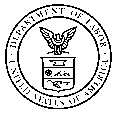ORS 4 COG 1G ORS - Cognitive Elements Test Recording Form
Occupational Requirements Survey
ORS Form 4 COG 1G
ORS - State and Local Government
OMB: 1220-0189
State and local government
Occupational Requirements Survey – Revised Cognitive Elements Test Recording Form |
||||||||||||
ORS Schedule # «Sched» |
IDC Schedule # (ECI overlaps) «ncs_sched» |
||||
Sample Information |
|||||
Sampled Region «Sample_region» |
Sampled Employment «Sample_employment» |
Sampled Ownership «Sample_ownership» |
Sampled NAICS «Sample_NAICS» |
||
Collection Information |
|||||
Collection Region «Collection_region» |
Reported Employment «reported_employment» |
Collected Ownership «collected_ownership» |
Collected NAICS «collected_NAICS» |
||
ORS FE «fe_first_name» «fe_last_name» |
NCS FE (ECI overlaps) «idc_first_name» «idc_last_name» |
||||
Company Information |
|||||
Company Name «company_name» |
|||||
Secondary Name «secondary_name» |
|||||
Street Address «street_address» |
|||||
City «city» |
State «state» |
ZIP «zip» |
|||
Respondent Information |
|||||
Respondent Name «respondent_pre» «respondent_pre» «respondent_pre» |
|||||
Respondent Title “respondent_title” |
|||||
Respondent Phone “respondent_phone” |
|||||
Notes:
|
|||||
First Sampled Job |
|||
Job Title «job_title_1» |
Quote # «Hit_number» |
||
SOC «soc_code» |
|||
«Full_part_time»/«Time_incentive»/«Union_nonunion» |
Employment «Occ_employment» |
||
Description: «job_description» |
|||
Notes:
|
|||
Second Sampled Job |
|||
Job Title «job_title_2» |
Quote # «Hit_number» |
||
SOC «soc_code» |
|||
«Full_part_time»/«Time_incentive»/«Union_nonunion» |
Employment «Occ_employment» |
||
Description: «job_description» |
|||
Notes:
|
|||
Work Review |
“job_title_1» |
“job_title_2» |
|
How frequently is work checked in the occupation? |
|||
|
☐ |
☐ |
|
|
☐ |
☐ |
|
|
☐ |
☐ |
|
|
☐ |
☐ |
|
Are supervisors generally present in the same work area as workers? |
Yes☐ No☐ |
Yes☐ No☐ |
|
Control of Work Pace, Workflow & Pause Control |
“job_title_1» |
“job_title_2» |
|
Which of the following most determines the pace of work? (Select one) |
|||
|
☐ |
☐ |
|
|
☐ |
☐ |
|
|
☐ |
☐ |
|
|
☐ |
☐ |
|
|
☐ |
☐ |
|
How would you describe the work flow for this job? Would you say that it … |
|||
|
☐ |
☐ |
|
|
☐ |
☐ |
|
|
☐ |
☐ |
|
Can workers step away from their work area easily outside of scheduled breaks? (e.g., short bathroom breaks)? |
Yes☐ No☐ |
Yes☐ No☐ |
|
Problem Solving |
“job_title_1» |
“job_title_2» |
|
The next question is about “problem solving” tasks that the worker does in his/her job. Think of “problem solving” as what happens when workers are faced with a new or difficult situation which requires them to think for a while about what to do next. How often is the worker responsible for solving problems that take more than 5 minutes to find a good solution? |
|||
|
☐ |
☐ |
|
|
☐ |
☐ |
|
|
☐ |
☐ |
|
|
☐ |
☐ |
|
|
☐ |
☐ |
|
Personal Contacts |
“job_title_1» |
“job_title_2» |
|
How often does this occupation require verbal, work-related interactions? |
|||
|
☐ |
☐ |
|
|
☐ |
☐ |
|
|
☐ |
☐ |
|
|
☐ |
☐ |
|
What level of “people skills” does this job require? |
|||
|
☐ |
☐ |
|
|
☐ |
☐ |
|
Checklist |
“job_title_1» |
“job_title_2» |
|
Are workers in this occupation… |
|||
|
Yes☐ No☐ |
Yes☐ No☐ |
|
|
Yes☐ No☐ |
Yes☐ No☐ |
|
|
Yes☐ No☐ |
Yes☐ No☐ |
|
|
Yes☐ No☐ |
Yes☐ No☐ |
|
|
Yes☐ No☐ |
Yes☐ No☐ |
|
ORS Form 4 COG 1G
| File Type | application/vnd.openxmlformats-officedocument.wordprocessingml.document |
| File Title | OMB Pre-Production ORS Collection Form, Government |
| Author | [email protected] |
| File Modified | 0000-00-00 |
| File Created | 2021-01-22 |
© 2026 OMB.report | Privacy Policy
